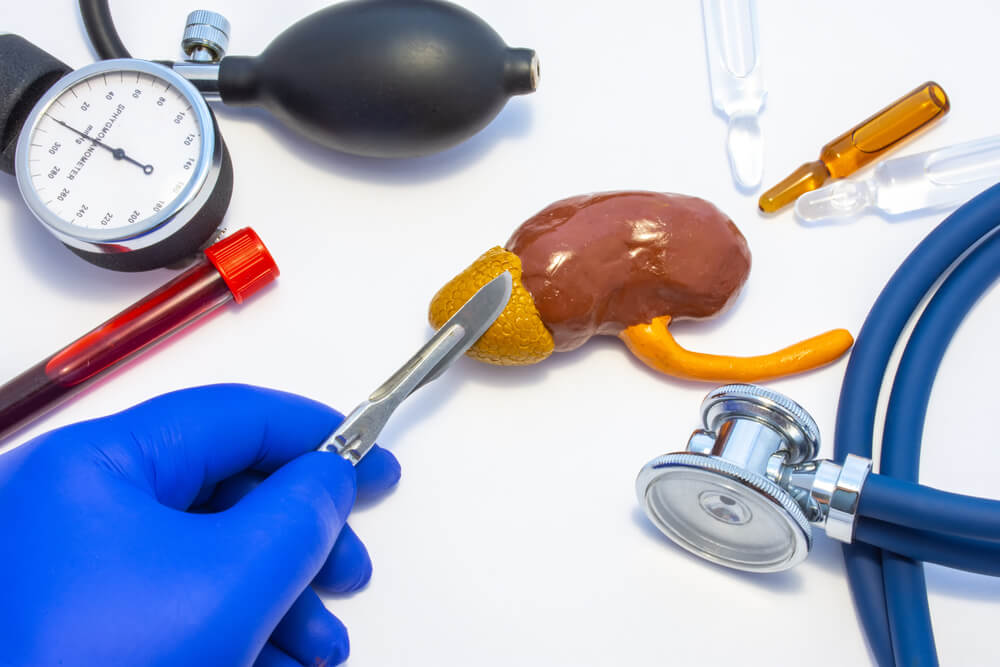An adrenal gland tumor, or an adrenal adenoma, is a noncancerous mass that may grow in the adrenal glands, and it’s the most common adrenal mass.
Most of these growths need no treatment and produce little to no symptoms. In some cases, however, an adrenal adenoma may interfere with hormone production, making the body produce more cortisol.
In this article, we’ll cover everything readers need to know about cysts on the adrenal gland, learn about the signs, and when there’s a need for endocrine tumor operation.
The Role of The Adrenal Glands
These small, triangular glands are found atop the kidneys and are responsible for secreting the hormones that help with the body’s stress response. Also, these glands produce hormones that help regulate blood pressure, blood sugar, and other essential functions.
These glands are comprised of two separate parts, the adrenal medulla, and the adrenal cortex. The latter secretes aldosterone and cortisol, while the adrenal medulla is responsible for epinephrine, norepinephrine, and dopamine production.
Adrenal adenomas usually occur in the adrenal cortex, mainly without any symptoms, and they won’t require medical attention.

Types of Adrenal Masses
There are two distinct types of adrenal gland tumors:
- Active or functioning adrenal adenomas which make the glands secrete more hormones, often causing symptoms that may need treatment.
- Inactive or nonfunctioning adrenal adenomas which do not interfere with hormone production. These are the most common and require no treatment, and neither they produce any symptoms.
Can An Adrenal Mass Become Cancerous?
Rarely, adrenal adenomas may form into cancer, more specifically, adrenocortical carcinoma. If they are functioning carcinomas, they will also make the glands produce more hormones and may cause similar symptoms as functioning, benign adrenal masses.
However, as stated above, adrenocortical carcinoma is really rare: only around one in a million people will develop it.
The Effects of Adrenal Adenoma
Anyone can develop these masses, and around 3% to 9% of the general population has it. As mentioned above, nonfunctioning cysts on the adrenal gland are usually much less concerning and don’t interfere with hormone production.
Functioning growths, on the other hand, do interfere and may lead to adrenal disorders such as:
- Hypercortisolism or Cushing’s syndrome: This happens when much cortisol gets released into the body. Adrenal gland tumor symptoms, in this case, may include sexual dysfunction, weight gain, and high blood pressure and may put patients at a higher risk of developing diabetes.
- Conn’s syndrome or primary aldosteronism: This occurs when the adrenal glands produce too much aldosterone. The signs of this condition include high blood pressure, low levels of potassium, muscle weakness, headaches, and fatigue.
- In some cases, cysts on the adrenal glands may increase the secretion of sex hormones as well. In women, this may lead to hirsutism (excess body hair growth) and irregular periods. In males, the increased estrogen levels may lead to erectile dysfunction and decreased sexual desire.
Adrenal Gland Tumor Symptoms and Causes
As mentioned above, based on the hormones being released in excess, active adrenal masses may cause several symptoms, including:
- Headaches
- Weak muscles
- High blood sugar
- Hugh blood pressure
- Low potassium levels
- Weigh gain
- Mood changes
- Abdominal stretch marks
- Irregular periods
- Virilization
- Low sex drive
- Erectile dysfunction
Causes
Experts aren’t exactly sure what causes these masses or other benign growths on the adrenal glands, for that matter. Still, scientists agree that there are specific genetic conditions that may increase the risks, such as:
- Familia adenomatous polyposis (FAP)
- Type 1 multiple endocrine neoplasia (MEN1)
- Type 2 endocrine neoplasia (MEN2)
- Carney complex
- Type 1 neurofibromatosis
- Li-Fraumeni syndrome
Tobacco use and being overweight may also increase the chances of developing adrenal adenomas.
Diagnosing Adrenal Masses
In most cases, these benign growths are discovered during imaging procedures for other medical conditions or concerns.
When the imaging shows a growth on the adrenal gland, doctors must first see whether the mass is cancerous or not. In the case of adrenal adenoma, doctors will also see whether the glands secrete excess hormones.
When diagnosing adrenal adenoma, medical experts may advise the following tests:
- Urine and blood tests: To make sure there aren’t any elevated hormone levels that may signalize a functioning growth.
- Imaging: In most cases, adrenal adenomas are diagnosed with CT scans and MRIs. Imaging can also help determine whether the mass is cancerous or benign (malignant growths tend to be larger).
- Biopsy: Gathering tissue from the growth to see whether it’s adrenal adenoma or cancer.
Treating Adrenal Masses
The best course of treatment will depend on whether the tumor is functioning or not. Small, nonfunctioning tumors may only require regular scanning to ensure the growth doesn’t grow and start to interfere with hormone production.
If the tumor gets bigger than 5 centimeters, doctors might recommend surgical removal because rapid-growing, large growths may increase the likelihood of becoming malignant.
For functioning tumors, surgery is almost always the option, but the treatments may also include:
- Removal of the adrenal gland or adrenalectomy: medical experts may recommend removing the glands with the help of laparoscopy in the case of being, small tumors. In the case of larger and probably cancerous tumors, more elaborate surgery is needed. Lather, the remaining adrenal gland may be able to produce enough hormones to keep everything in check. If not, additional hormone therapy will be needed.
- Medications: If surgery isn’t an option, the healthcare provider may prescribe specific drugs that prevent the adrenal mass from forcing the glands to produce more hormones than necessary. As mentioned above, medications may also be recommended following surgery to stabilize hormone levels.

Prevention
Unfortunately, there aren’t any prevention methods for these masses. Also, the associated risks are often gene-related, but people may develop adrenal adenomas even if they have no family history of these benign tumors.
Fortunately, treatment outcomes regarding adrenalectomy are usually excellent and removing the adrenal gland that’s affected often eliminates the uncomfortable symptoms.
In the case of nonfunctioning growths, patients will usually be recommended periodic imaging tests and/or hormone testing to monitor the status of the masses. This way, if the tumor, by any chance, starts to grow rapidly and becomes too large, the doctors can take the necessary steps in time.
Opt for Exceptional Care
Even if you get diagnosed with an adrenal gland tumor during an imaging procedure, you shouldn’t get overly alarmed or scared. In most cases, these are benign and completely harmless masses. Sometimes, they may interfere with hormone production, in which case, doctors will usually recommend surgery to remove the affected gland. Adrenalectomies are successful in the vast majority of cases and will help solve the problem. And, if you need additional hormone therapy, your doctor will ensure that you will live a healthy and happy life.
That being said, exceptional care and experience are all essential in managing these growths. Feel free to reach out to Dr. Omar Rashid and schedule an appointment to learn more about adrenal masses.


